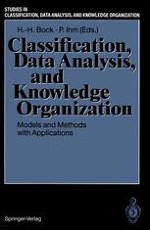In science, industry, public administration and documentation centers large amounts of data and information are collected which must be analyzed, ordered, visualized, classified and stored efficiently in order to be useful for practical applications. This volume contains 50 selected theoretical and applied papers presenting a wealth of new and innovative ideas, methods, models and systems which can be used for this purpose. It combines papers and strategies from two main streams of research in an interdisciplinary, dynamic and exciting way: On the one hand, mathematical and statistical methods are described which allow a quantitative analysis of data, provide strategies for classifying objects or making exploratory searches for interesting structures, and give ways to make comprehensive graphical displays of large arrays of data. On the other hand, papers related to information sciences, informatics and data bank systems provide powerful tools for representing, modelling, storing and retrieving facts, data and knowledge characterized by qualitative descriptors, semantic relations, or linguistic concepts. The integration of both fields and a special part on applied problems from biology, medicine, archeology, industry and administration assure that this volume will be informative and useful for theory and practice.
